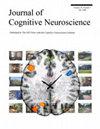Model-based Mind Wandering in Older Adults: Age Differences in the Behavioral and Electrophysiological Correlates of Subjective and Objective Measures of Mind Wandering
IF 3.1
3区 医学
Q2 NEUROSCIENCES
引用次数: 0
Abstract
Mind wandering is typically characterized as a failure of attentional control, yet despite age-related executive function deficits, older adults typically report less mind wandering than younger adults during cognitive tasks and in daily life. Self-reported mind wandering episodes usually result in similar behavioral detriments in younger and older adults (e.g., greater RT variability, more task errors). However, the relatively few studies investigating the neural correlates of mind wandering and aging have revealed mixed findings, possibly because they typically rely on infrequent thought probes and, therefore, few trials for neural analyses. In the current study, we propose a method to recover more task data by categorizing trials from a commonly used sustained attention to response task according to RT variability. Behavioral data (n = 49 younger; n = 40 older) revealed that compared with younger adults, older adults reported fewer mind wandering episodes, but showed similar behavioral impacts thereof. Furthermore, in both age groups, subjective reports of mind wandering predicted the more objective sorting of trials into “on-” and “off-task” according to RT variability. Using these objectively sorted trials, we investigated two commonly reported EEG measures of mind wandering (diminished P1 and P3 amplitude) in 26 younger and 24 older adults. Although the P1 did not differ between on- and off-task trials for either group, the P3 was diminished for off-task trials in both age groups (albeit significantly less in older adults) suggesting preserved perceptual but reduced higher-order processing during off-task periods in both groups.老年人基于模型的思维徘徊:主观和客观思维徘徊测量的行为和电生理相关性的年龄差异。
思维游离的典型特征是注意力控制失效,然而,尽管存在与年龄相关的执行功能缺陷,老年人在认知任务和日常生活中的思维游离程度通常低于年轻人。在年轻人和老年人中,自我报告的思维游离发作通常会导致类似的行为损害(如更大的RT变异性、更多的任务错误)。然而,调查思维游走与衰老的神经相关性的研究相对较少,其结果也不尽相同,这可能是因为这些研究通常依赖于不频繁的思维探测,因此用于神经分析的试验较少。在当前的研究中,我们提出了一种方法,通过将常用的持续注意反应任务中的试验按照RT变异性进行分类,从而恢复更多的任务数据。行为数据(n = 49 名年轻人;n = 40 名老年人)显示,与年轻人相比,老年人报告的思维游离发作次数较少,但表现出的行为影响相似。此外,在这两个年龄组中,对思维游移的主观报告都能预测根据实时变异性将试验分为 "任务中 "和 "任务外 "的更客观分类。利用这些客观分类的试验,我们对 26 名年轻人和 24 名老年人中两种常见的精神游离脑电图测量方法(P1 和 P3 振幅减弱)进行了研究。虽然两个年龄组的 P1 在任务中和任务外试验之间没有差异,但两个年龄组的 P3 在任务外试验中都有所减弱(尽管在老年人中明显减弱),这表明两个年龄组在任务外期间都保留了知觉处理,但减少了高阶处理。
本文章由计算机程序翻译,如有差异,请以英文原文为准。
求助全文
约1分钟内获得全文
求助全文
来源期刊
CiteScore
5.30
自引率
3.10%
发文量
151
审稿时长
3-8 weeks
期刊介绍:
Journal of Cognitive Neuroscience investigates brain–behavior interaction and promotes lively interchange among the mind sciences.

 求助内容:
求助内容: 应助结果提醒方式:
应助结果提醒方式:


